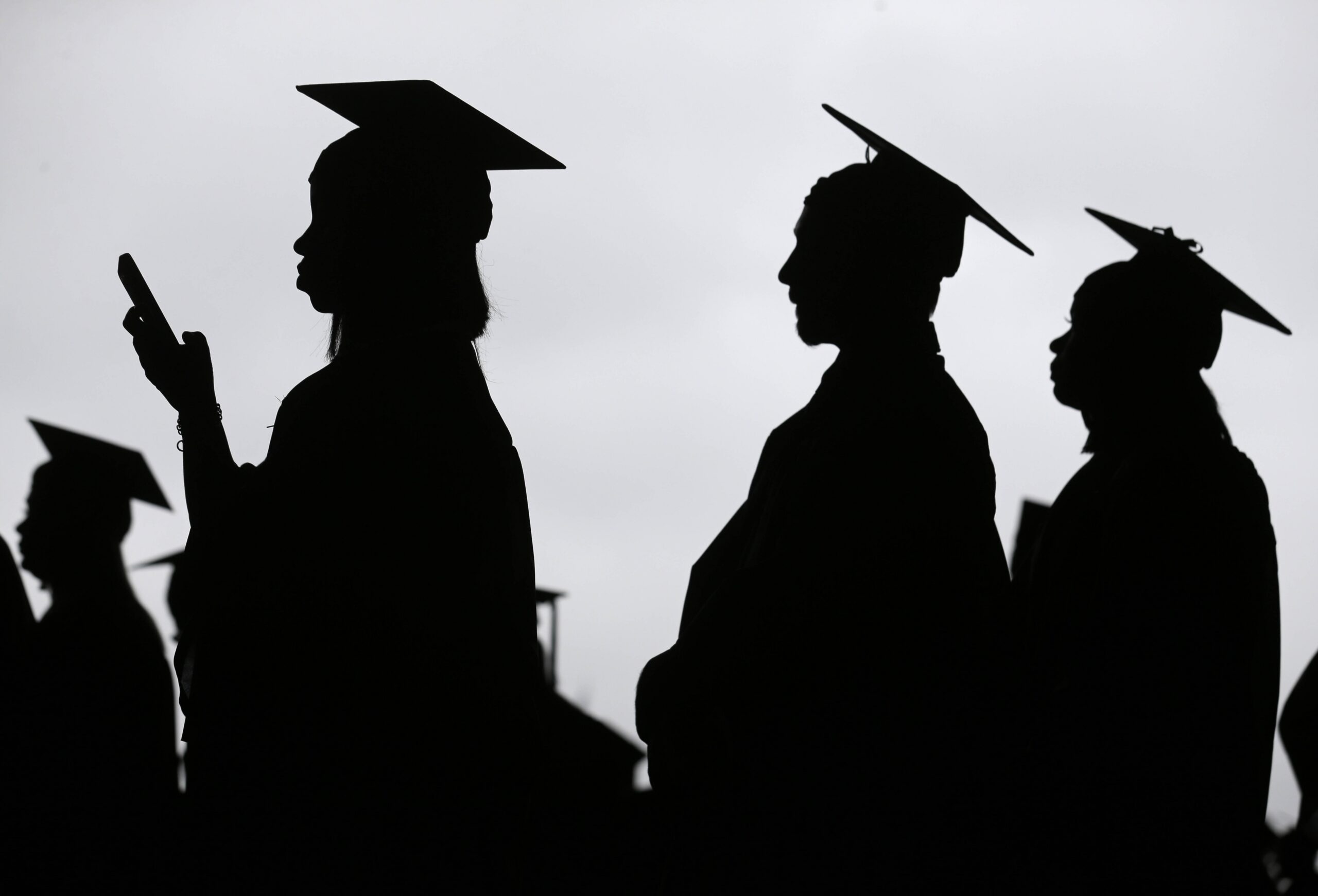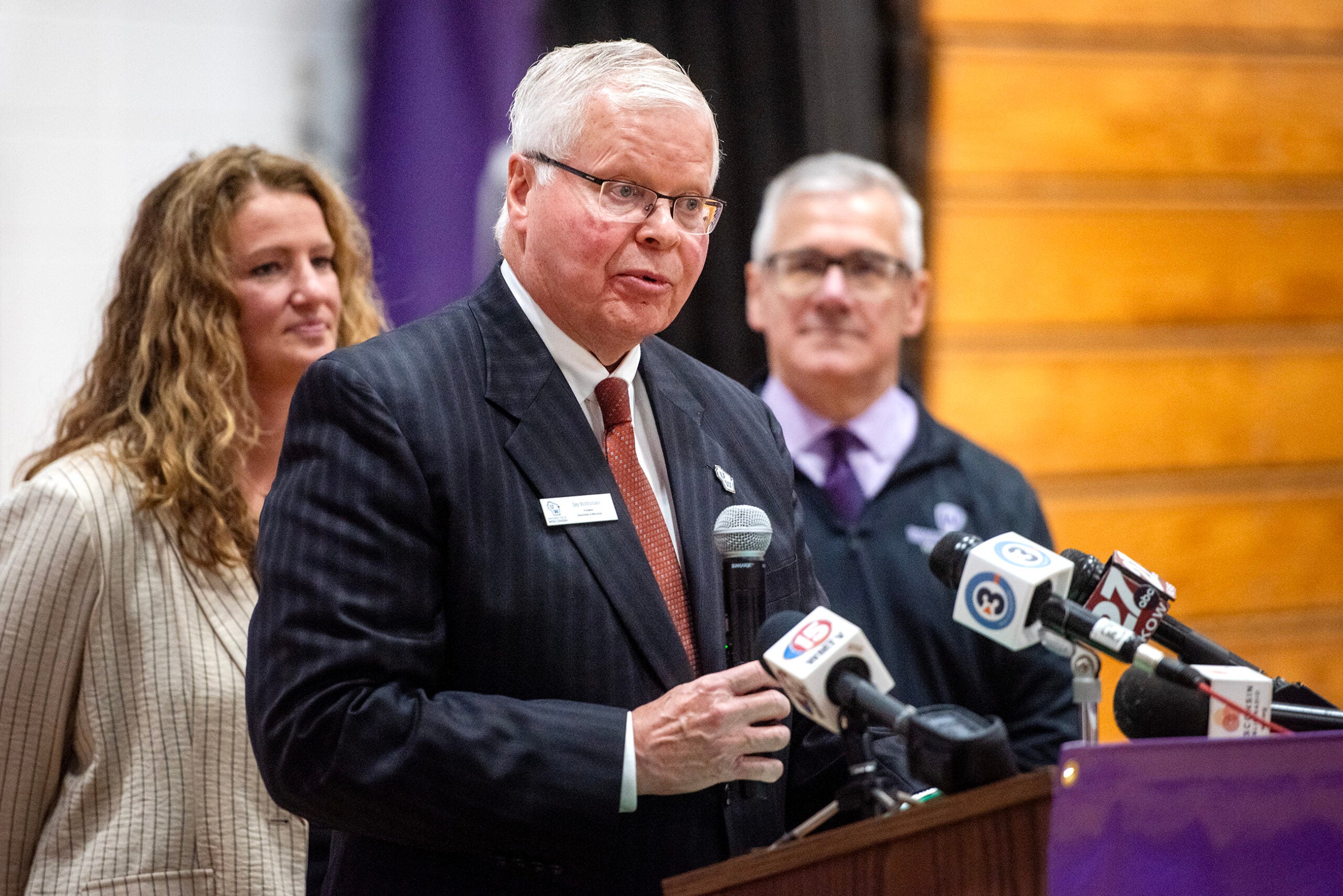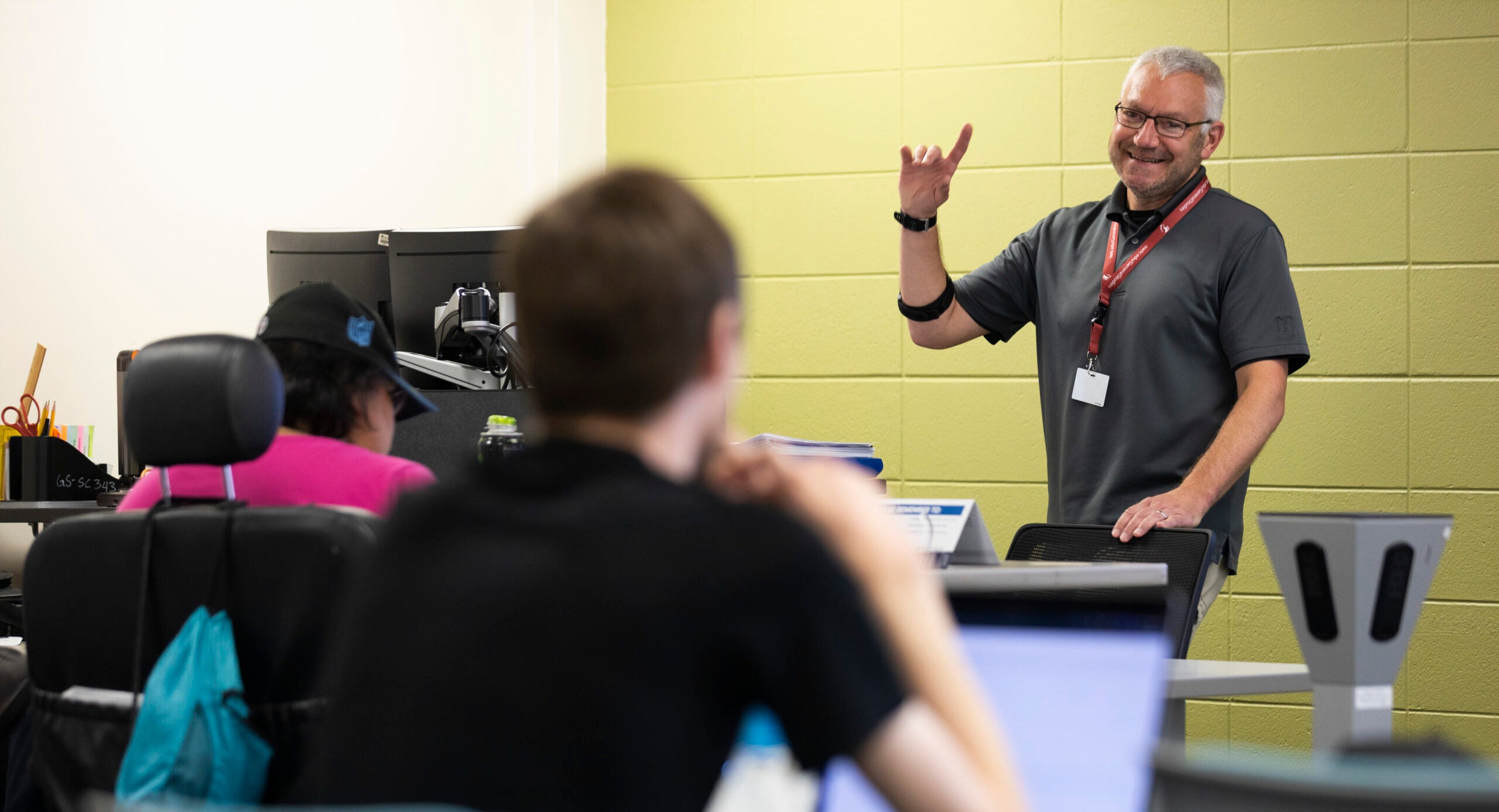The number of Wisconsin high school seniors who have completed the federal form needed to receive college financial aid is down by more than a quarter so far this year.
The Free Application for Federal Student Aid, or FAFSA, determines how much financial aid a student can receive. The form affects scholarships, grants, student loans and work-study opportunities.
The form got a revamp this year, but it was released three months behind schedule with technical problems, some of which have yet to be resolved. Colleges and universities didn’t receive student financial aid information until the middle of March, delaying the distribution of financial aid offers.
News with a little more humanity
WPR’s “Wisconsin Today” newsletter keeps you connected to the state you love without feeling overwhelmed. No paywall. No agenda. No corporate filter.
The latest data from the National College Attainment Network shows more than 8,000 fewer Wisconsin seniors have completed the form compared to last academic year. That’s a decrease of 27 percent between the high school classes of 2024 and 2023. Completion rates are lower for low-income students and students of color.
While there is still time for students to complete the forms, the sharp decline has educators worried about the impact on students and on already falling college enrollment.
MorraLee Keller, senior director of strategic programming at the National College Attainment Network, said about 20 percent of the applications nationally were processed incorrectly. Another 16 percent of forms need to be corrected.
“Students have really sort of been through the wringer with attempting to get FAFSAs completed this year,” Keller said.
Why are completion rates so low?
According to the United States Department of Education, of 356 public school districts in Wisconsin, about 91 percent of districts have fewer FAFSA completions now than they did this time last year. Almost every public school district in the state has FAFSA completion rates below 50 percent.
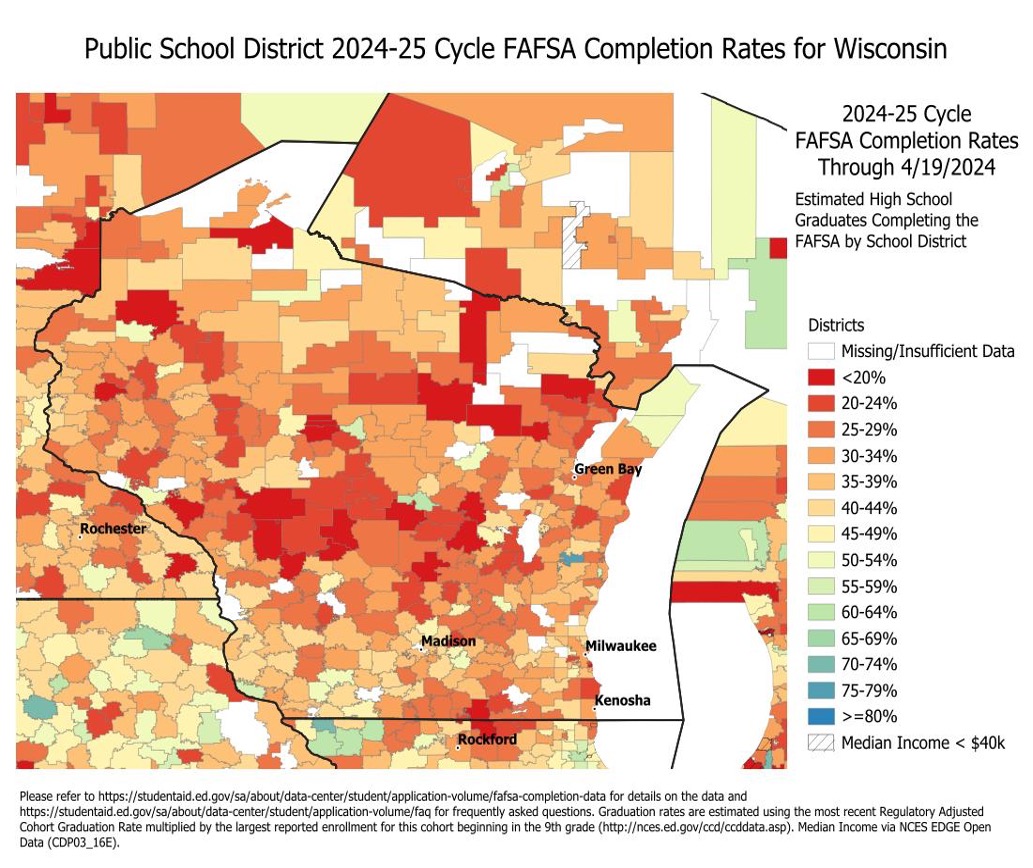
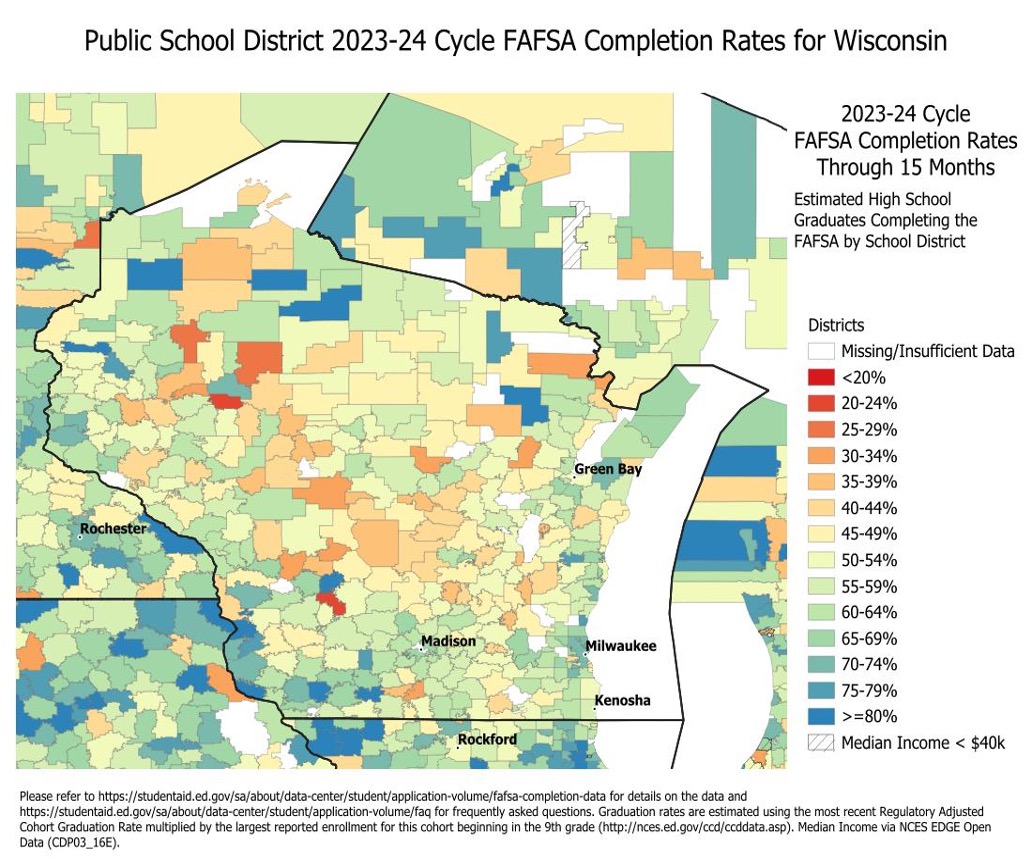
Besides mistakes at the federal level, Keller suspects another contributing factor to low completion rates is student fatigue.
“Unfortunately, we’ve heard some folks have just been kind of frustrated with the whole idea, and maybe some students have given up on the idea of going to college next fall,” Keller said.
What ripple effects will this have?
Experts said it’s too soon to say definitively what low FAFSA completion rates will mean in the long term. But, there are concerns about enrollment, degree attainment and workforce readiness.
Keller said if a student completes a FAFSA, it’s a strong indicator that they will attend college. She said it is “probably pretty likely” that enrollment declines for the upcoming school year will be sharper than ones due to the COVID-19 pandemic.
Nick Hillman, a professor in the School of Education at the University of Wisconsin-Madison, studies educational opportunities in the United States. He said the problems with the FAFSA highlight inequality because FAFSA filers tend to have the greatest economic insecurity.
“If these FAFSA challenges end up getting in the way of people pursuing higher education, then that just could potentially limit access and affordability,” Hillman said.
At a time when Americans are questioning the value of going to college, data from College Board shows people with higher levels of education earn more, generate more tax revenue and are more likely to be employed. They also are more likely to vote and volunteer. Hillman said the payoff is even greater for students from low-income backgrounds.
“There’s definitely enough of an evidence base to say this isn’t just kind of a minor problem that’s just going to iron itself out over time. There could be some ripple effects here,” Hillman said.
Experts said it’s too early to know the exact implications of lower FAFSA completion rates and enrollment on the workforce. But they speculate it could lead to a less robust and skilled workforce.
Colleges are feeling the effects too.
Tuition is a large part of many colleges’ operating budgets. Most of the Universities of Wisconsin have budget deficits in the millions. Private schools are also facing fiscal challenges as enrollment declines and expenses rise.
Universities are responding by asking municipalities for help, raising tuition, cutting staff or closing branch campuses.

At the University of Wisconsin- River Falls, director of financial aid Robert Bode said FAFSA submissions are down about 35 percent from this same time last year.
Bode said a preliminary review shows that among the current financial aid applicants for the upcoming school year, over 30 percent are flagged as being eligible for a Pell Grant. That is about a 10 percent increase over last year. He suspects state grant monies are going to need to be supplemented by at least another $750,000 to accommodate the influx.
FAFSA completion rates are increasing
“We don’t want to scream the sky is falling yet,” Keller said.
FAFSA completion rates slowly increased since the beginning of April. Keller hopes by the end of summer completion rates for the high school class of 2024 will be “much more” comparable to the class of 2023.
“That’s if we keep our fingers crossed, but we don’t have a crystal ball,” Keller said.
Ericca Pollack, college access coordinator for Milwaukee Public Schools, said schools in the district are reaching out weekly to students who haven’t completed the form. Three college and career centers will be open throughout the summer to help with the FAFSA.
“It is critical to fill the form out now,” Pollack said.
High schools, technical and community colleges and community based organizations are hosting FAFSA completion events.
Financial aid administrators said now is the time the Department of Education typically starts working on the next FAFSA cycle, which typically starts in the fall. Bode said he would “not be at all surprised” if the 2025-2026 FAFSA cycle is delayed.
“The situation is on fire. We’re putting out the fires right now, rather than trying to prevent the fire in the next year,” Bode said.
Wisconsin Public Radio, © Copyright 2026, Board of Regents of the University of Wisconsin System and Wisconsin Educational Communications Board.
